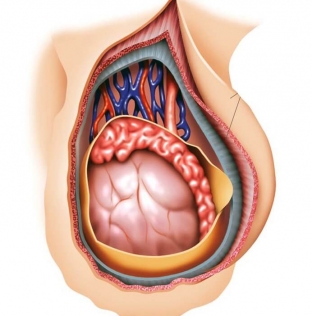An inflammatory process in the epididymis is called epididymitis. In most cases, epididymitis is a complication of a chronic inflammatory disease of the urinary system. Epididymitis can be acute or chronic, but acute is more common. The main factor for the development of epididymitis is the stagnation of blood in the pelvis. It has also been found that epididymitis can develop after male sterilization. The inflammatory process begins as a result of the accumulation of sperm coming from the testicles into the appendages, which do not have time to dissolve at a normal rate.
What causes epididymitis?
Another cause of epididymitis is the presence of a chronic bacterial infection. Epididymitis can develop at any age, but is more common in young men aged 20-40 years. In young boys, epididymitis may occur after trauma to the scrotum. How epididymitis manifests itself, read further on estet-portal.com. In the presence of bacterial foci, the infection ascends through the urethra and bypasses the prostate through the vas deferens. After that, the infection immediately enters the appendages.
Epididymitis is caused by only two groups of microorganisms. The first group includes sexually transmitted pathogens, and the second group includes Escherichia coli. Therefore, men who have anal sex have an increased risk of developing epididymitis.
Clinical picture and dangerous symptoms of acute epididymitis
Acute inflammation in the epididymis is accompanied by a sharp increase in temperature up to 39-40 0 C. The scrotum is edematous, hyperemic, walking and any movements occur with pain in the scrotum on the side of the lesion. The pain may radiate to the groin, sacrum, or lower back. If epididymitis is combined with orchitis and periorchiepididymitis, then the organs of the scrotum are not contoured.
If left untreated, the manifestations of acute epididymitis disappear after a few days. At the same time, an inhomogeneous infiltrate of dense consistency is formed in the region of the tail or body of the appendage, which is often replaced by scar tissue.
Auto-aggression and scarring after acute epididymitis are the cause of infertility.
Epididymitis can involve damage to the vas deferens, called deferentitis, or involve the spermatic cord (funiculitis). With deferentitis, the seminal duct is palpated as a dense painful cord. With funiculitis, it is defined as a painful thick cord. Epididymitis of gonorrheal etiology has an acute course.

Symptoms of epididymitis that indicate a need to see a doctor:
- intense abdominal pain;
- mucous discharge from the urethra;
- burning during urination;
- increased or infrequent urge to urinate;
- appearance of indurations in the testicle or its enlargement.
Main clinical manifestations of chronic epididymitis
After the manifestations of acute epididymitis subside, the process can become chronic. Chronic epididymitis in remission does not cause any subjective sensations in the scrotum. Frequent exacerbations of the process provoke the growth of fibrous tissue in the appendage, and its degeneration occurs. Such processes are accompanied by scarring and obstruction of the vas deferens.
On palpation of the scrotum, a seal is determined, sometimes the appendage is enlarged. It is also possible to thicken the spermatic cord and increase the diameter of the vas deferens. In chronic epididymitis, sperm quality decreases, which, together with cicatricial changes, causes infertility. Read the following article for the principles of treatment of epididymitis.






Add a comment